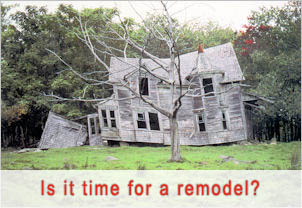
Key Takeaways
- Bathroom design regrets among first-time home buyers in the US. They tend to make misjudgments in their budget, either spending too much on things that don’t enhance value or spending too little on things that are necessary for day-to-day use.
- This prioritization of today’s design trends over real, practical needs results in regret in the long run. What looks great now might fall out of style, or might not serve you well as your lifestyle evolves.
- Inexperience and feeling overwhelmed during the planning process commonly result in overlooked details, making professional advice and thorough research crucial for success.
- Overlooking layout details such as storage, lighting, ventilation, and future accessibility needs can require expensive changes down the line. As household needs change, this mistake can further limit comfort.
- Bathroom renovations, particularly plumbing and electrical work, are often more complicated than first-time homeowners may anticipate, leading to costly surprises and functional drawbacks.
- Focusing on both functionality and aesthetics, while planning for future resale and maintenance, helps homeowners create bathrooms that remain valuable, practical, and enjoyable over time.
This most often occurs as a result of inadequate planning, not enough real-life testin, and undervaluing their everyday needs. In metro areas, like San Francisco, residents frequently have to make the bathroom design choice between style and function with limited square footage.
Consequently, problems such as lack of storage, cramped layout,s and poor lighting become evident almost immediately. While trends such as open showers and floating vanities are aesthetically pleasing, these homes never quite conform to the realities of family life or that of the dual-income workforce.
Other errors with tile, grout, or ventilation lead to long-term maintenance migraines. There’s a reason these bathroom designs are such common regrets.
The following sections outline those issues and provide practical bathroom design advice that’s especially effective in space-challenged urban dwellings.
Why First-Time Buyers Face Bathroom Blues
With some planning ahead, many of these first-time bathroom blunders can be avoided by new U.S. Homebuyers before they even move in. That’s particularly the case in San Francisco. The root causes usually go much deeper than picking the wrong color tile.
Budget constraints and trend-driven decisions frequently negate the potential. At the same time, inexperience and failure to consider future demands lead buyers to create a disappointing space. The impact of these challenges is felt much more severely by local homebuyers. High property values, short renovation windows, and the region’s rapidly evolving real estate market all stack the deck against them.
The digestible sections that follow elucidate why these regrets are widespread and how more proactive planning could have prevented them.
1. Budget Bites: Overspending Or Underspending
Over-budgeting or under-budgeting.Budgeting failures are the biggest regret when renovating bathrooms. Too many first-time buyers establish their budget based on an ideal situation rather than considering their actual needs.
They could overspend on high-end fixtures and then have nothing left over for plumbing or ventilation. Or, they end up skimping on necessities just to pinch pennies. Both lead to issues: overspending can cause financial stress, while underspending often sacrifices durability and comfort.
Surprise expenses can drain a budget quickly. Water damage behind a rotten vanity or out-of-code wiring can quickly derail the project’s timeline, too! Too often do new homeowners hope they had planned for a bigger buffer or gone by more precise estimates before breaking ground.
Essential budgeting tips:
- Begin with a realistic list of must-haves vs. nice-to-haves.
- Gather multiple quotes from local contractors.
- Add 15-20% extra for unplanned expenses.
- When it comes to high-use items such as faucets, tile, etc., prioritize quality.
- Avoid rushing; take time to compare prices and options.
Don’t go in with unrealistic expectations and start swinging a hammer. Take these steps to ensure your bathroom renovation doesn’t end up in the regret pile when the paint dries!
2. Trend Traps: Chasing Fads Over Function
While it’s easy to want to chase the hottest design trends, it’s understandable with the heavy promotion on social media and TV shows for things like bold tiles, floating vanities, or open-concept showers. These decisions can become outdated in a hurry or not accommodate everyday requirements.
For example, while aesthetically pleasing, a vessel sink can be an expensive choice that leaves you splashing water all over the counter. Black matte finishes can spot water and scratches in a matter of months. One of the biggest surprises first-time buyers find is that beautiful pictures can be deceiving.
This is particularly important when it comes to shared or family bathrooms that are used frequently.
Trendy Feature | Functional Alternative | Pros (Function) |
Vessel sink | Undermount sink | Easier cleaning, less mess |
Freestanding tub | Built-in tub with surround | Storage, child-friendly |
Floating vanity | Cabinet vanity with drawers | More storage, sturdy |
Frameless glass shower | Semi-frameless with ca urb | Less water on the floors |
While trends are understandably all the rage and change every year, a bathroom should be designed to serve its users for decades. Focusing on function instead of fad will lead to fewer buyer’s remorse moments down the line.

3. Inexperience And Overwhelm During Planning
Planning a first-time bathroom renovation can definitely be an intimidating thought. There are literally hundreds of decisions—from tile to grout to fixtures to lighting to layout.
First-time buyers often begin the process enthusiastically only to become overwhelmed by all of the choices. Red flags of overwhelm are creating doubt about your selections, rushing into decisions, or avoiding important planning processes.
To make it easier, take the process step by step. Try not to think about everything at once, but instead focus on one element at a time. Create mood boards or request sample kits, and don’t feel afraid to ask for assistance.
Seek free guidance from friends or family who have renovated. Their advice can save you from making rookie blunders, such as installing towel bars in inconvenient spots or choosing materials that won’t stand the test of time. The time invested in planning can pay off in spades. Even if it delays the project by a couple of weeks, it’s worth it in the end!
4. Ignoring Long-Term Practicality Needs
The bathroom in a new home should be more than just a showpiece—it should be practical and work for anyone who lives there. Aesthetics are often the priority for first-time homebuyers.
They may go with a dramatic look with the floor tile which ends up being slippery. Or, they might just ignore the height needs of different family members, resulting in impractical vanities or inaccessible shelving. Yet some designs ignore the needs of children, older adults, or guests with disabilities.
It’s an oversight that can lead to expensive renovations down the line. Changes like adding grab bars, lowering vanities or widening the shower door can lead to costly retrofitting. Instead, choose flexible fixtures and finishes, such as movable shower heads or tough, low maintenance materials.
Planning for needs that may come with aging, injury, or the expansion of family can prevent headaches and costs in the future.
5. Underestimating Renovation Complexity
Bathroom renovations might seem simple, but there’s a lot to consider. Whether you need to move a plumbing line or rewire for a new light fixture, it’s rarely as straightforward as it seems.
Most first-time buyers don’t realize just how much expertise it takes. A different trade every day, from plumbers to electricians to tilers to finishers, each working their craft.
Some of the more complicated bathroom tasks that need a professional’s touch are waterproofing, retiling, and updating electrical outlets. Overlooking professional assistance can result in serious issues, including water leaks, mold, or even dangerous electrical wiring.
Key steps to simplify:
- Map out the existing plumbing and electrical layout.
- Check what code requirements you might need to adhere to with the city or a licensed professional.
- Get clear, written quotes and timelines.
- Schedule inspections as needed.
- Take things one change at a time so you don’t compound your mistakes.
Understanding the true complexity helps buyers avoid expensive mistakes.
6. Misleading Advice From Media Sources
The TV shows and magazine spreads never seem to capture the entire process of a renovation. Quick turnarounds, extra expenses not disclosed upfront, and sleight of hand reveals create misleading expectations.
That’s why many buyers attempt to recreate the latest “influencer” bathroom without making the concepts work for their needs, let alone their space. So always be sure to approach media advice with a skeptical eye.
Keep in mind that not every trend is appropriate for every home. Look to media that provides in-depth before-and-after pictures, real-life testimonials, or examples from your community. Specific advice based on the real home one can afford, a realistic budget, and desired lifestyle yields the best results.
7. Prioritizing Looks Over Livability
This approach, prioritizing looks over livability, may come back to haunt you. A bathroom that’s Instagram-ready could become an annoying disaster when it’s time to use it every day.
Bad decisions that impact livability range from omitting storage in favor of a streamlined aesthetic. Other goofs include placing fixtures in difficult-to-reach areas or choosing surfaces that mar or discolor with the slightest provocation.
Balancing form and function means thinking through daily routines—where towels will hang, how easy the floor is to clean, and whether lighting works for tasks like shaving or makeup. Comfort and ease of use should be as important as style.
8. Forgetting About Future Resale Appeal
So design decisions impact your immediate enjoyment as well as your long-term resale value. Bright colors, personalized tile designs, and extravagant bathtubs won’t appeal to the average buyer.
Not only do they fail to raise the property’s value, but they may lower it. Bathroom fads are a quick way to lose market appeal. Simple, timeless features always do better on the market.
High-Resale Feature | Trendy But Impractical |
White subway tile | Patterned cement tile |
Double vanity | Pedestal sinks |
Neutral paint colors | Dark or bold hues |
Walk-in shower with seat | Open wet-room layout |
Considering long-term how the space will present to potential buyers pays dividends in future return on investment.
9. Lifestyle Changes Reveal Design Flaws
Life moves quickly, especially as a first-time homeowner. What might work perfectly for a single person could be completely inadequate for a growing family.
Whether it’s the arrival of more children or parents getting older, needs change. Storage shortages, hard-to-clean surfaces, or layouts that aren’t safe or functional become acute concerns. Regularly check in on how the space is working—and make small adaptations—so the bathroom remains functional and comfortable.
Common catalysts for renovations are the arrival of a new baby, a need for an injury-related accommodation, or a shift in work-from-home patterns. Flexible designs, such as adjustable storage and removable fixtures, better equip homes to meet the changes that life brings.
10. Skipping Professional Design Help
While DIY is always attractive, professional design help can be well worth the time and money. Designers know how to lay out fixtures, optimize the space, and select materials.
Common Regrets: Specific Design Flops
Even many veteran bathroom designers wouldn’t blame you for second-guessing your design decisions after living with them for some time… it happens! Common Regrets Designers’ regrets typically arise from under-considering functional requirements, emphasizing appearance over the experience of everyday use, or failing to learn from others’ renovation failures.
Here are the top design flops and what fuels regret.
Layout And Space Planning Mistakes
Layout and space planning mistakes often rank as number one on our list of common design regrets. Cramped paths of travel, abrupt changes in direction, and fixtures crammed into corners or nooks frequently render restrooms inaccessible.
Door swings or traffic flow not being planned for can result in a major irritation every single day. Essential considerations include:
- Enough clearance by the toilet, shower, and vanity
- Door and drawer space
- Creating a smooth transition for shower access. This is particularly important with open showers in cold climate regions.
- Reviewing existing plumbing and electrical setups before starting
Fixture Choices That Disappoint
Homeowners tend to regret trendy fixtures that look great, but fail in form. Rain shower heads look great and feel wonderful until you try to wash your hair quickly and need a targeted water spray.
Double showers with multiple heads may look amazing, but reduced water pressure leaves both underwhelming. If you want a vanity, but skip this detail, you’ll create storage gaps. More than style, quality counts. So while stylistic visibility is important, quality is paramount.
Tile Troubles: Style VS. Maintenance
Making a statement tile choice can go awry. Cream colored grout requires daily scrubbing to prevent yellowing. Tiling over previous mosaics seldom holds up.
The table below shows trade-offs:
Tile Type | Pros | Cons |
Porcelain | Durable, easy | Can feel cold |
Natural Stone | Upscale look | Needs sealing, stains |
Glass | Modern finish | Shows water spots |
Pick tiles that fit your cleaning habits and space.
Storage Shortfalls And Clutter Issues
Failure to plan for storage results in cluttered counters and crowded shelves. You can maintain the organization. Built-in solutions, such as deep drawers or cabinetry, help eliminate clutter.
Ideas include:
- Medicine cabinets with mirrors
- Floating shelves above the toilet
- Drawers under sinks
- Recessed niches in showers
Lighting And Ventilation Oversights
Disregarding the realities of lighting and ventilation creates a breeding ground for mold and an overall feeling of being closed in. An overhead light in the center of a space is not sufficient.
Combat it by using layered lighting and introducing windows or ceiling fans where possible. Use lighting to enhance grooming and self-care. Small rooms for toilets can become stuffy quickly, so ensure ventilation is provided for comfort and hygiene.
Future-Proofing Your First Bathroom
Thoughtful planning and design can make a big difference in a first home’s bath. Many first-time homeowners quickly learn that the solutions they went with as short-term fixes can’t last. Trendy features can quickly leave them feeling like their needs aren’t being served.
A bathroom designed to accommodate future renovations will keep you ahead of the game, saving time, money, and aggravation in the future. Planning for flexibility starts with addressing both function and form, from the overall layout to individual fixtures.
Designing For Accessibility Later
Designing for Accessibility Later Accessibility is not just a trendy term to throw around. The proportion of Americans aged over 65 will increase by a third by 2054. Considering aging and mobility issues in your design from the beginning is the best way to future-proof your space!
Designing features such as non-slip flooring, grab bars, or wider doorways can ensure that people of all ages and abilities can safely use the bathroom. Universal design’s ease, comfort and efficiency offers benefits to everyone, regardless of age or ability.
These seemingly small choices can add up! By adding a walk-in shower or installing sinks at varying heights, a home can become a much easier place to live for decades down the road. Planning for these modifications while designing or renovating a home will prevent costly retrofits down the line as a person’s needs evolve.
Timeless Choices VS. Fleeting Trends
While trendy tiles or bold colors can be tempting, looks with staying power are always the best choice. Classic white subway tiles, crisp lines, soft arches, and a neutral color palette will outlast the trend cycle and work with almost any aesthetic.
High-quality materials, like porcelain or stone, stand up to scratching and staining, allowing the bathroom to stay just as clean and crisp years later. It’s worth investing in quality fixtures, such as electronic toilets with bidet functions, that add value but remain relevant with the continued evolution of technology.
Considering Family Growth Or Changes
Considering family growth or changes, Roommates leave, babies come, or aging parents move in. Future-proofing against these transitions involves selecting versatile layouts and versatile, adjustable, or easily removable storage solutions.
Bath and shower designs that accommodate all heights and ages help everyone, including parents and caregivers. With open shelves within easy reach, the bathroom easily transitions to accommodate a growing and/or changing family.
Smart planning during this phase can save you monumental headaches and dollars later.

Conclusion
First-time homeowners in the Bay Area go all out with their bathroom design plans, but life comes at you fast. Little spaces, high dollars, and difficult-to-maintain ceramic flooring derail many of them. Trendy tile choices age poorly, high-end plumbing fixtures get gunked up or malfunction. Most regret not spending more on proper lighting or storage that works in the space. It benefits us to listen to these people who have to live with these decisions every single day, rather than just blindly swipe through shiny pictures. Save yourself the headache with a few small upgrades—more intelligent storage, slip-free floors, and durable fixtures go a long way. To replace regret with pride, detail your bathroom successes and mistakes in the comments below or submit your topic for discussion. Get inspired by the real world, not just the showroom.
Frequently Asked Questions
1. Why Do So Many First-Time Homeowners Regret Their Bathroom Design Choices?
Many first-time buyers overlook daily needs and trends. When faced with living in that space every day, their decisions prioritize style over substance, and they often regret those choices.
2. What Are The Most Common Bathroom Design Mistakes In San Francisco Homes?
Hazardous—first-time homeowners frequently choose inadequate lighting, fail to provide storage, or install slick tiles. Yet these decisions are ill-suited for the city’s small residences and on-the-go lifestyles.
3. How Can I Balance Style And Function In My Bathroom?
Opt for classic colors, prioritize function and storage, and select low-maintenance materials. Consider how you want to use the space on a daily basis!
4. Why Is Bathroom Renovation So Expensive To Fix Later?
Changes to a bathroom sometimes require moving plumbing fixtures or redoing tile work, which can easily become expensive. The danger of fixing mistakes often requires you to tear out new work, and besides being expensive, that’s a huge disruption.
5. What Materials Should I Avoid For Easy Bathroom Maintenance?
Avoid porous tile, high-gloss finishes, and grout that’s difficult to clean. Pick materials that are mold- and water stain-resistant for easier maintenance.
6. How Do I Future-Proof My Bathroom In The Bay Area?
Install grab bars, opt for walk-in showers, and non-slip flooring surfaces. These age-friendly renovations boost your home’s value.
7. What’s The Best Way To Avoid Bathroom Design Regrets?
Don’t rush into design choices, lean on local expertise, and focus on function over fleeting trends. Take a trip to showrooms in San Francisco for more aspirational inspiration and expertise.
Your Dream Bathroom Starts With Mares & Dow Construction – Let’s Build A Beautiful Space Together
Thinking about a bathroom remodel in Concord, Walnut Creek, Pleasant Hill, or Lafayette? Whether you’re envisioning a luxurious spa-like retreat or a smart, space-saving update, choosing the right contractor is the most important step in turning your vision into reality.
With over 40 years of proven experience, the team at Mares & Dow Construction & Skylights is trusted throughout Contra Costa County for expert craftsmanship, transparent pricing, and outstanding customer service. We specialize in:
- Bathroom Remodeling – Upgrade your outdated bathroom into a stylish, functional, and energy-efficient space. From elegant tilework and modern fixtures to walk-in showers and custom vanities, we handle every detail with precision.
- Decks and Outdoor Living Spaces – Extend your home’s living space with beautifully designed decks, patios, and pergolas built to last.
- Foundation Repairs and Waterproofing – Protect your home from moisture and structural damage with our reliable repair and waterproofing services.
- Custom Skylight Installations – Brighten your bathroom naturally with premium skylight solutions installed by a certified VELUX 5-Star Skylight Specialist.
- General Contracting Services – From bathroom renovations to larger home improvement projects, we manage every aspect with the highest standards in the industry.
Proudly serving Alamo, Danville, Orinda, Martinez, San Ramon, and the surrounding areas, Mares & Dow Construction & Skylights is committed to delivering exceptional results. Whether you’re a homeowner upgrading your primary bathroom or an investor modernizing a property, we ensure your remodel is completed on time, within budget, and with superior quality.
Don’t trust your bathroom remodel to just anyone. Contact Mares & Dow Construction & Skylights today for a free, no-obligation consultation, and let’s turn your bathroom into a space you love.
Disclaimer
The materials available on this website are for informational and educational purposes only and are not intended to provide construction, legal, or professional advice. You should consult with a qualified general contractor or industry professional for advice concerning any specific construction project, remodeling plan, or structural concern. Do not act or refrain from acting based on any content included on this site without seeking appropriate professional guidance. The information presented on this website may not reflect the most current building codes, regulations, or industry best practices. No action should be taken in reliance on the information on this website. We disclaim all liability for actions taken or not taken based on any or all of the contents of this site to the fullest extent permitted by law.





 based on
based on 

